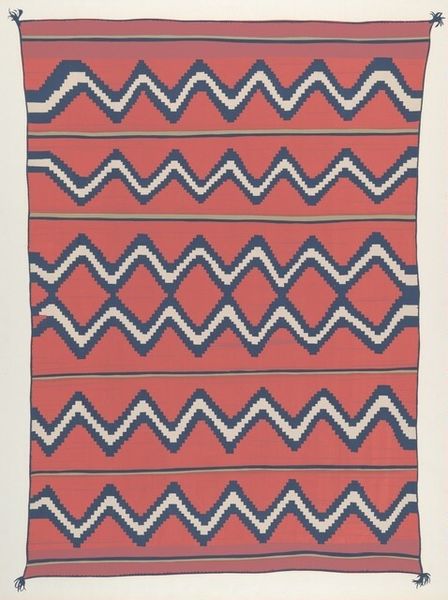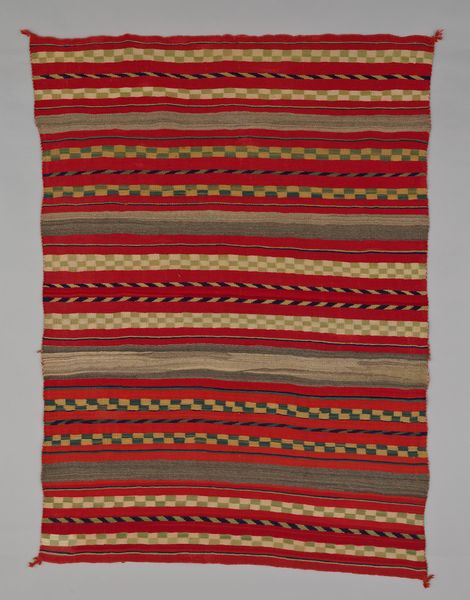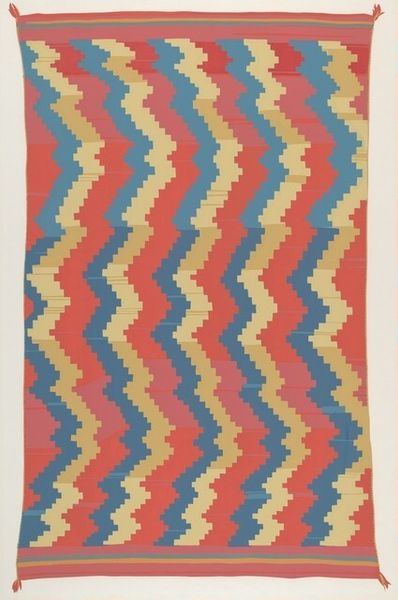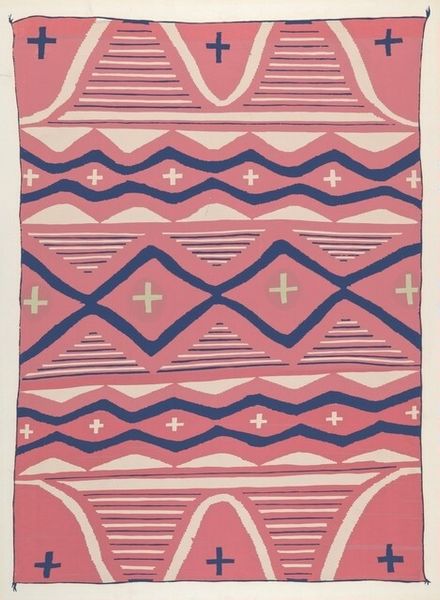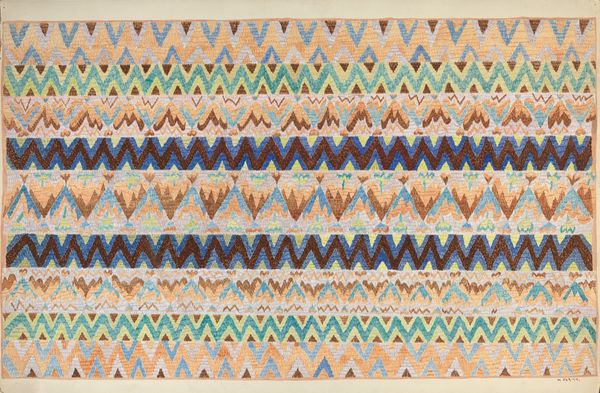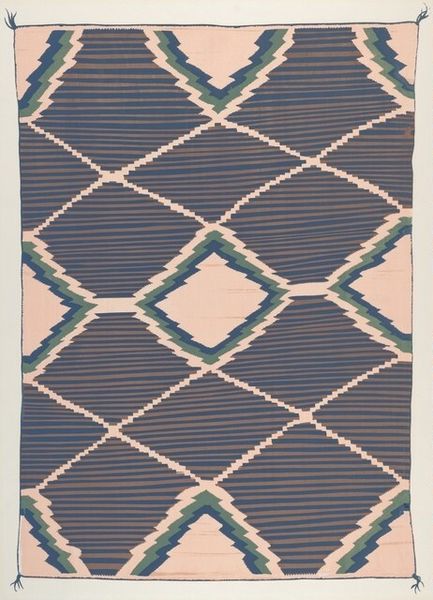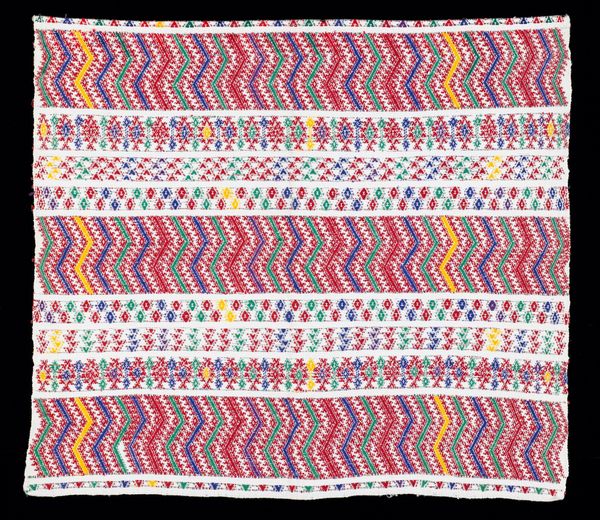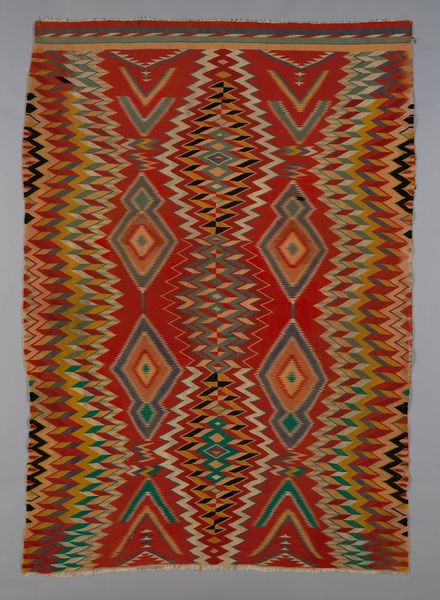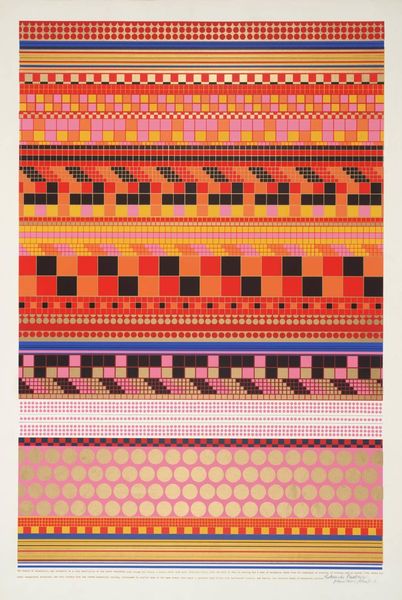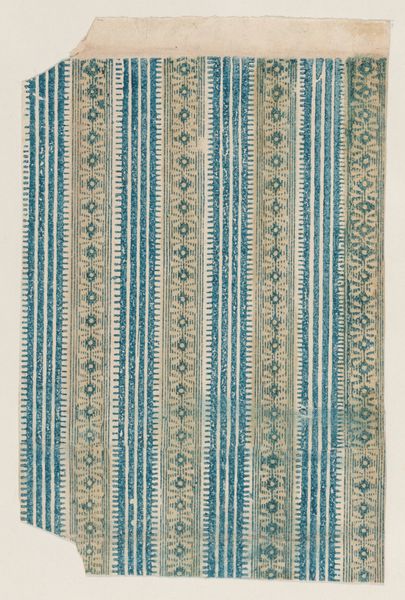
weaving, textile
#
weaving
#
textile
#
fashion and textile design
#
pattern design
#
organic pattern
#
geometric
#
fabric design
#
repetition of pattern
#
pattern repetition
#
textile design
#
imprinted textile
#
layered pattern
#
combined pattern
Dimensions: image: 590 x 370 mm sheet: 661 x 507 mm
Copyright: National Gallery of Art: CC0 1.0
Curator: This is "Plate 3", a textile design by Louie H. Ewing, likely created between 1940 and 1943. The piece features a series of horizontal stripes punctuated by geometric patterns. Editor: It feels calming, almost meditative. The repetition of the stripes and the subtle color palette creates a sense of peace, yet those angular motifs have such visual energy. It's a beautiful push and pull. Curator: The colors certainly resonate with me. Look at the restrained use of pastel tones – dusty rose, lavender, creams – common in indigenous American textiles. These hues likely carry significant cultural memory related to landscape and identity. Editor: And how the design incorporates that zig-zag motif. It disrupts the horizontal flow, doesn’t it? Perhaps it challenges a rigid interpretation of culture. What does this design express about identity formation amid potentially oppressive social structures of that era? Curator: Historically, such patterns frequently represented mountains or lightning, powerful natural forces. Woven images like these weren't just decoration; they served as narrative devices, ways to encode important communal stories and knowledge. The cultural symbolism of those motifs cannot be extracted from their artistic execution. Editor: Exactly. And considering that it was produced in the early to mid 1940’s. The cultural meaning may have been affected by the increased movement during WWII? Are there ways that the motif alludes to cross-cultural collaboration or even appropriation? How did Louie Ewing identify culturally, and is that revealed in this textile print? Curator: Good point, though unfortunately specific details on that front seem elusive for this artwork. We might interpret the interplay of geometric and organic forms as a microcosm of this interaction between different cultures and perhaps different kinds of knowledges and experiences. Editor: To think this textile began as raw material, painstakingly crafted into form… and then multiplied as a printed design… Its evolution mirrors our own understanding of it. Curator: Indeed. Each time we revisit it, another layer of significance seems to materialize. Editor: And like a well-woven story, its intricate threads connect past, present, and perhaps, a more equitable future.
Comments
No comments
Be the first to comment and join the conversation on the ultimate creative platform.
